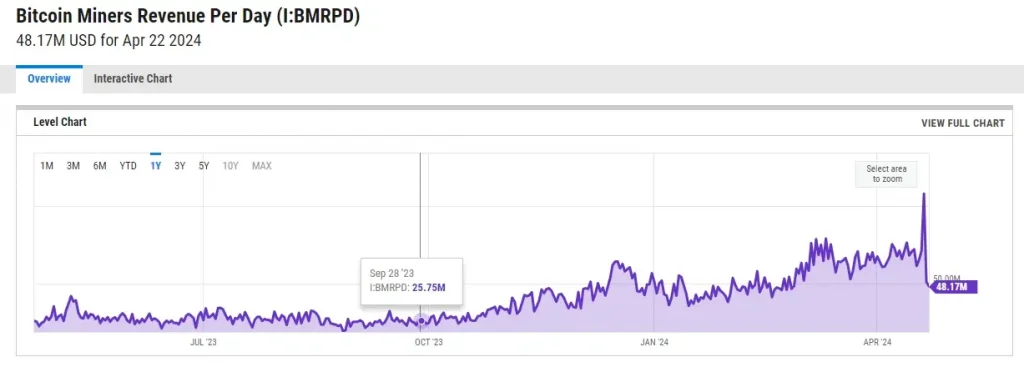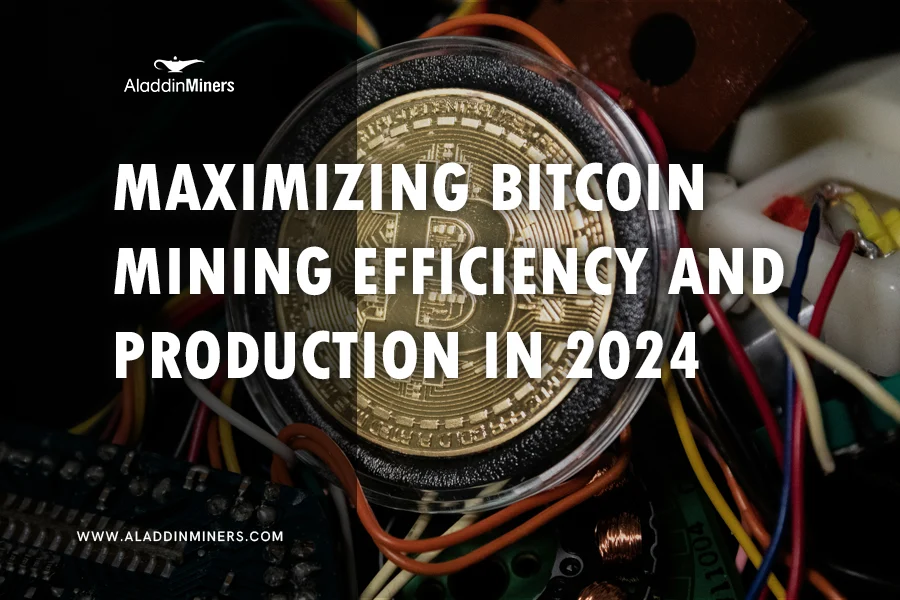As the digital gold rush continues to evolve, Bitcoin mining remains at the forefront of cryptocurrency wealth generation. Yet, the introduction of the Runes Protocol marks a significant milestone not just in mining but in the broader Bitcoin ecosystem. This protocol, which enables new functionalities on the Bitcoin blockchain akin to those seen in more programmatically flexible platforms like Ethereum, is changing the landscape for miners everywhere. Understanding the Runes Protocol is now crucial for anyone looking to navigate the future of Bitcoin mining effectively.

Understanding Bitcoin Mining Basics
Bitcoin Mining Explained
Bitcoin mining is the foundational process through which new bitcoins are created and all Bitcoin transactions are verified and added to the blockchain ledger. It involves the use of specialized hardware known as ASICs (Application-Specific Integrated Circuits) to solve complex cryptographic puzzles. Each time a miner successfully solves a puzzle, a new block is formed and the miner is rewarded with a certain number of bitcoins. This not only introduces new bitcoins into circulation but also secures the network by verifying the legitimacy of transaction information packed in each block.
Role of Miners in the Bitcoin Network
Miners play a pivotal role in maintaining the security and integrity of the Bitcoin network. As decentralized ledger enforcers, they perform several crucial functions:
- Transaction Verification:Miners check transactions for validity, ensuring no double-spending or fraudulent activities occur.
- Network Security:Through the proof-of-work (PoW) process, miners contribute computational power to the network, creating a barrier that makes it exceedingly difficult for any single entity to alter past transactions.
- Block Creation:By solving computational challenges, miners create new blocks that record and store verified transactions on the blockchain. This block creation is critical for the scalability and continued operation of the blockchain.
Introduction to Runes Protocol
What is Runes Protocol?
The Runes Protocol is an innovative addition to the Bitcoin blockchain, designed to expand the network’s functionality beyond its original scope of handling transactions and generating new bitcoins. At its core, Runes Protocol facilitates the creation and management of digital tokens and assets directly on the Bitcoin blockchain, bringing a new level of versatility to this historically transaction-focused platform.
Purpose and Functionality
The primary purpose of the Runes Protocol is to enable features similar to those seen in other blockchain ecosystems, such as Ethereum, which supports smart contracts and decentralized applications directly on its network. Runes Protocol aims to:
- Tokenize Assets:It allows users to create tokens that can represent a variety of assets or rights, managed securely on the Bitcoin blockchain.
- Enhance Functionality:By enabling tokenization, Runes opens up possibilities for uses such as voting systems, digital collectibles, and more complex financial instruments.
- Maintain Bitcoin’s Robustness:It leverages the inherent security and widespread adoption of Bitcoin while introducing new functionalities.
The Genesis of Runes Protocol
Development Background
The development of the Runes Protocol was driven by a clear vision to enhance the capabilities of the Bitcoin blockchain. This initiative was spearheaded by a group of innovative developers within the Bitcoin community who recognized the potential to harness Bitcoin’s underlying security and network effects while expanding its utility. These developers were motivated by the success of tokenization on platforms like Ethereum and sought to integrate similar functionalities into Bitcoin without compromising its core principles.
Motivation Behind Its Creation
The primary motivation behind the creation of the Runes Protocol was to address several perceived limitations of Bitcoin as solely a cryptocurrency system:
- Lack of Versatility:Unlike Ethereum, which was designed from the ground up to support a wide range of applications through smart contracts, Bitcoin’s architecture was primarily focused on currency and payment applications. Runes Protocol was envisioned as a way to bridge this functionality gap.
- Enhancing Bitcoin’s Appeal:By introducing capabilities for tokens and complex contract-like functions, the developers aimed to make Bitcoin more attractive not only to investors but also to developers and enterprises looking to leverage blockchain technology for a variety of applications.
- Preserving Decentralization:It was crucial that the introduction of new features did not compromise Bitcoin’s decentralized nature. The Runes Protocol was designed to work within Bitcoin’s existing framework, ensuring that it enhanced rather than undermined the blockchain’s foundational principles.
Technical Insights: How Runes Protocol Works
Operational Mechanics
The Runes Protocol operates by utilizing a layer that sits atop the existing Bitcoin blockchain, functioning through a series of advanced scripts that interact with Bitcoin’s core functionalities. This layer enables the creation, issuance, and management of tokens without altering the primary structure of the Bitcoin blockchain.
- Token Creation:Utilizing a method similar to that used by Ethereum’s ERC-20 standard, Runes Protocol allows for the creation of tokens by defining a set of rules and behaviors in scripts that are compatible with Bitcoin’s scripting system. These tokens can represent anything from physical assets to digital services.
- Transaction Handling:When a token is created or transferred, the transaction is recorded on the Bitcoin blockchain, with additional data embedded to indicate the specifics of the token transaction. This requires slightly more data to be included in each transaction, which can affect transaction sizes and fees.
Comparison with Traditional Bitcoin Transactions
To understand the enhancements brought by the Runes Protocol, it’s useful to compare it with traditional Bitcoin transactions:
- Data Complexity:Traditional Bitcoin transactions involve simple inputs and outputs, primarily dealing with the transfer of bitcoin from one address to another. Runes Protocol transactions, in contrast, involve more complex data to handle the various attributes and functionalities of tokens.
- Processing Requirements:The additional data in Runes Protocol transactions requires more processing power, which can lead to higher transaction fees as miners need to allocate more resources to process these transactions.
- Versatility and Functionality:While traditional Bitcoin transactions are limited to transferring value, Runes Protocol transactions can carry a variety of executable scripts, expanding the use cases of Bitcoin to include smart contract-like functions and asset management.
The introduction of the Runes Protocol is a leap forward in blockchain technology, allowing Bitcoin to support a broader range of applications while maintaining its robust security features. This technical advancement not only enhances Bitcoin’s functionality but also opens up new avenues for developers and businesses looking to utilize blockchain technology in innovative ways.
Impact of Runes Protocol on Bitcoin Mining
Changes in Mining Processes
The integration of the Runes Protocol into Bitcoin has introduced several changes to the mining processes, primarily due to the increased complexity and size of transactions that the protocol supports. These changes have significant implications for how miners operate:
- Increased Block Size:Transactions that include Runes operations tend to be larger due to the additional data required for token actions. This increase in transaction size can lead to larger blocks, which require more computational power to process.
- Prioritization of Transactions:Miners may opt to prioritize transactions based on the fees associated with them. Since Runes transactions can carry higher fees due to their complexity, they are often more attractive to miners seeking to maximize their rewards.
Potential Benefits
The Runes Protocol offers several potential benefits to miners that extend beyond traditional mining advantages:
- Higher Fees, Higher Rewards:As mentioned, the complexity of Runes transactions can lead to higher transaction fees. Miners who are equipped to handle these transactions effectively can benefit from increased fees, boosting their profitability.
- Diversification of Revenue Streams:By supporting a broader range of transactions, miners can diversify their operations. This diversification can help stabilize income, particularly during periods when standard Bitcoin transaction fees are lower.
Challenges and Considerations
While the Runes Protocol offers opportunities for increased revenue, it also presents unique challenges that miners need to consider:
- Need for Enhanced Hardware:The increased data load of Runes transactions might require miners to upgrade their hardware to handle the larger block sizes and maintain competitive processing speeds.
- Fluctuations in Profitability:The profitability of mining Runes transactions can fluctuate significantly depending on the market demand for token transactions and the overall network congestion. Miners need to stay adaptive and responsive to these market dynamics.
- Technical Complexity:The added complexity of managing and verifying Runes transactions requires a deeper technical understanding. Miners may need to invest in training or hiring skilled personnel to optimize their operations for Runes Protocol transactions.
Getting Started with Runes Protocol for Mining
Step-by-Step Setup Guide
Embarking on mining with the Runes Protocol involves several critical steps designed to ensure both efficiency and profitability. Here’s a straightforward guide to getting started:
- Hardware Acquisition:First and foremost, you’ll need to acquire hardware that is capable of handling the Runes Protocol’s requirements. This means investing in high-performance ASIC miners that can manage larger block sizes and increased transaction complexity.
- Software Configuration:Next, configure your mining software to support Runes Protocol. This involves updating to a version that is compatible with the protocol’s specifics, ensuring that it can process and validate tokenized transactions as well as traditional Bitcoin transactions.
- Connect to a Mining Pool:Given the increased difficulty in mining Bitcoin blocks, joining a mining pool that supports Runes Protocol can be advantageous. Pools allow individual miners to contribute to the processing power of a larger group, increasing the chances of earning mining rewards, which are then shared among pool members according to their contributed power.
Best Practices and Tips
To maximize the efficiency and profitability of your mining operations with the Runes Protocol, consider the following best practices:
- Optimize for Energy Efficiency:Given the higher processing power required for Runes transactions, ensuring that your mining setup is energy efficient can help reduce operational costs. Look for ways to optimize energy use and consider renewable energy sources if feasible.
- Regular Updates and Maintenance:Keep your mining software and hardware well-maintained and regularly updated. This includes installing updates from both the hardware manufacturer and the Runes Protocol development team, which can include important security patches and efficiency improvements.
- Monitor the Market:The profitability of mining with the Runes Protocol can vary based on the Bitcoin market and the demand for transaction processing. Regularly monitoring these conditions can help you adjust your mining operations to focus on the most profitable transactions.
Strategies to Capitalize on High Transaction Fees
To take full advantage of the high transaction fees associated with the Runes Protocol, consider implementing these strategies:
- Dynamic Fee Scaling:Use tools that dynamically adjust the fees you’re willing to accept for processing transactions. This can help you maximize earnings by prioritizing higher-fee transactions during times of network congestion.
- Analytical Tools:Leverage analytical tools to forecast fee trends based on network activity. This can provide you with a strategic advantage, allowing you to adjust your mining operations in anticipation of higher fee periods.

The Future of Mining with Runes Protocol
Trends and Predictions
The integration of the Runes Protocol into Bitcoin mining suggests several exciting trends and predictions for the future of cryptocurrency mining:
- Increased Blockchain Versatility:As more miners adopt the Runes Protocol, we can expect Bitcoin’s functionality to expand significantly. This increased versatility will likely attract a broader range of applications, potentially making Bitcoin more competitive with other blockchain platforms that support complex contracts and decentralized applications.
- Growth in Decentralized Finance (DeFi):The Runes Protocol could catalyze growth in Bitcoin-based DeFi applications. This would leverage Bitcoin’s robust security features while enabling functionalities such as tokenization, lending, and trading directly on the blockchain.
- Enhanced Mining Hardware and Algorithms:To keep up with the increased demands of the Runes Protocol, there will likely be innovations and improvements in mining hardware and algorithms. These advancements will aim to process transactions more efficiently, handle larger blocks, and reduce energy consumption, aligning with the global push towards sustainability.
Influence on the Crypto Mining Industry
The implications of the Runes Protocol extend beyond individual miners to influence the broader crypto mining industry:
- Standardization of Advanced Mining Practices:As the Runes Protocol becomes more integrated into Bitcoin mining, we may see a shift towards standardization of practices that support advanced functionalities like tokenization. This standardization could streamline operations and foster a more cooperative environment among miners.
- Regulatory Attention and Frameworks:The expanded capabilities of Bitcoin through the Runes Protocol might draw more attention from regulatory bodies. This could lead to the development of new frameworks that address the complexities introduced by tokenization and other advanced features, impacting how miners operate within legal boundaries.
The future of mining with the Runes Protocol is poised at the cutting edge of blockchain technology. By enabling Bitcoin to support a wider array of functions, the protocol not only enhances the blockchain’s utility but also opens up new avenues for miners to generate revenue. As the industry continues to evolve, staying informed and adaptable will be crucial for miners who wish to capitalize on these emerging opportunities.
Conclusion
As we wrap up our exploration of the Runes Protocol and its implications for Bitcoin mining, it’s clear that this development marks a significant pivot point for the industry. By broadening the scope of Bitcoin’s functionality through the Runes Protocol, miners are presented with new opportunities that extend far beyond the traditional bounds of cryptocurrency mining.
For aspiring miners, understanding and adapting to the Runes Protocol is not just about staying competitive. It’s about seizing a chance to be at the forefront of a technological evolution, where the capabilities of Bitcoin are expanding to meet the diverse needs of a digital economy. The protocol’s ability to support tokenization and other complex transactions on Bitcoin’s secure and decentralized platform opens up a wealth of possibilities for innovation and profit.
To those looking to dive into Bitcoin mining or to enhance their existing operations, now is an opportune time. The integration of Runes Protocol represents fertile ground for growth and experimentation within the mining sector. By embracing these new technologies, miners can not only increase their profitability but also contribute to the maturation and diversification of the Bitcoin ecosystem.




